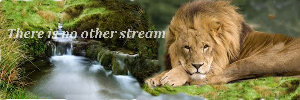The first Talking Beasts we meet (if we read the books in publication order) are the Beavers, who live in something like a cross between a beaver's sett and a human house; Mr. Beaver does the ordinary beaver's thing of building a dam, but they drink tea and ale, eat food in a human way (with plates and cutlery) and Mrs. Beaver even has a sewing machine.
All the later Talking Beasts, on the other hand, seem to live like their dumb beast counterparts. Pattertwig has a nest in a tree, Bree eats grass.
So what "use" to them is a human-level intelligence if they live just like dumb beasts?
Is their 'use' something that is there to serve Aslan's purpose, rather than their own needs? Perhaps before the 100 years of winter some of the beasts did have a more human style of life?
But they are still beasts, so Lewis didn't deprive them of their animal properties. He just added some extra abilities (thought, speech, etc).
Trufflehunter shares a very human style home with two dwarfs, of course.
There, shining in the sunrise, larger than they had seen him before, shaking his mane (for it had apparently grown again) stood Aslan himself.
"...when a willing victim who had committed no treachery was killed in a traitor's stead, the Table would crack and Death itself would start working backwards."
Well, most of the animals lack the human body parts necessary to fully exploit their human intellects: parts such as opposable thumbs. That's why critters like the beavers or badgers can build houses, but you won't see a horse doing that. The rodents and things have paws with separate fingers which can be used like hands while standing upright (which many animals of that kind can actually do, most noticeably squirrels.) Horses would have to work with their mouths, which I imagine would be hard on the teeth if one tried to build a home with them.  Each animal makes the most with what it's been given. And if creatures like the beavers could work and think like humans, it's easy to imagine them wanting to improve their diets with cooked food and flavored beverages. The fact that they still live in a dam could be tied to instinct or just tradition. ("It's the BEAVER way!")
Each animal makes the most with what it's been given. And if creatures like the beavers could work and think like humans, it's easy to imagine them wanting to improve their diets with cooked food and flavored beverages. The fact that they still live in a dam could be tied to instinct or just tradition. ("It's the BEAVER way!")
At least, that's my understanding. Lewis might still have some explaining to do as to how a fox can hold a glass in its paw.  Or how a Lion could dub you with a sword, shake hands with you, or help you get dressed with its paws.
Or how a Lion could dub you with a sword, shake hands with you, or help you get dressed with its paws. 
PM me to join the Search for the Seven Swords!
Co-founder of the newly restored Edmund Club!
Did I mention I have a YouTube Channel?: https://m.youtube.com/channel/UCeuUaOTFts5BQV3c-CPlo_g
Check out my site: https://madpoetscave.weebly.com
signature by aileth
I wonder if it is significant that the only two dwellings we see the Pevensie children enter are full of objects and food that they recognize, Tumnus' cave and the Beaver dam/house. It makes sense and seems like it might be fate that the Beavers have a house where all of them can comfortably sit and eat and discuss matters when they're the first ones to guide the children where they need to go. Even in the case of the children being led to Mr. Beaver, though, it is a bird which doesn't seem to speak but has the intelligence to find and communicate to the children. Every talking beast makes use of their ability and intelligence in their own way. One could even argue that eating grass and oats and 'natural' food as Bree calls it is more intelligent, because all the effort to gather and prepare human-style meals and do all the washing and table setting that that requires probably seems like a waste to a horse that eats grass or a squirrel that's good with nuts or a bear that just wants straight honey.
"Narnia, Narnia, Narnia,
Awake.
Love. Think. Speak.
Be Walking Trees
Be Talking Beasts
Be Divine Waters"
-The Magician's Nephew

